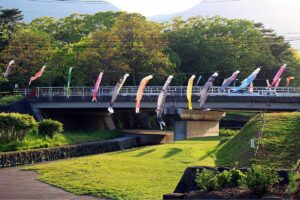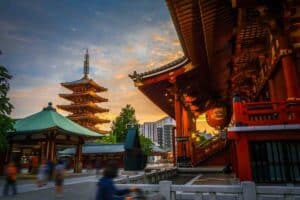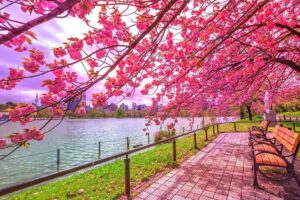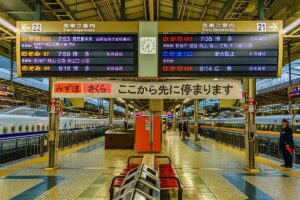Bridging the gap between eastern Shinano Omachi station and western Dentetsu Toyama station, the Alpine Route (or ‘The Rooftop of Japan’) is a ninety-kilometer stretch deemed to be the most scenic route on the planet.
Boasting unbeatable panoramic views, a snow-lined highway, a ropeway, and an array of other things to see and do, this popular tourist hotspot is a once-in-a-lifetime trip in anyone’s travel journal.
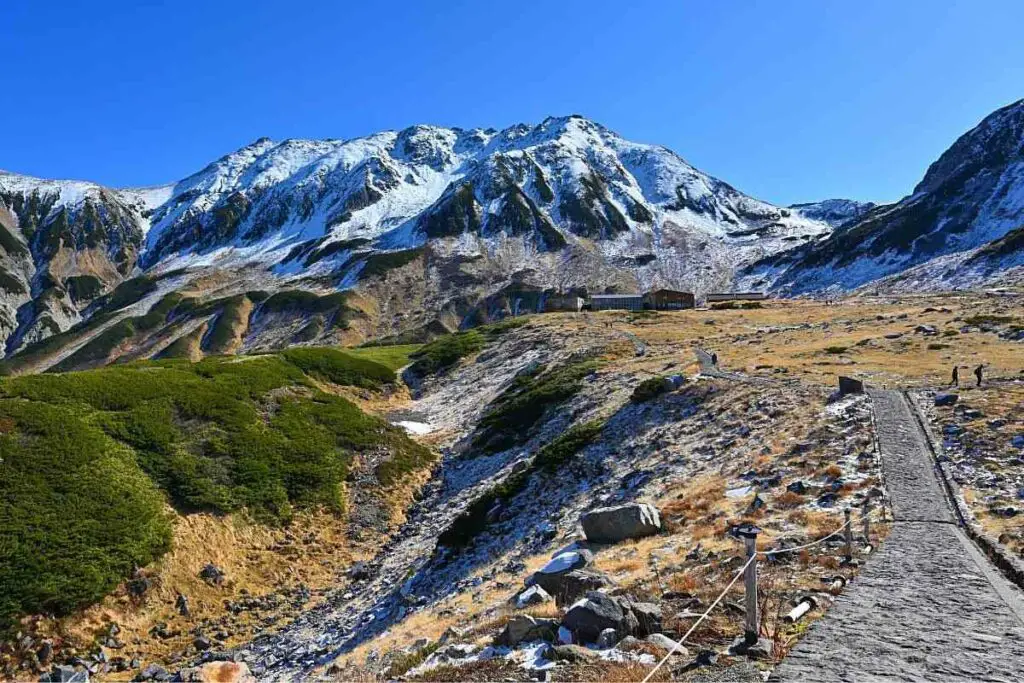
Here, we will detail the best times to traverse this iconic landscape.
What’s the History Behind the Alpine Route?
Not just internationally popular for its scenery, the Alpine Route is also spiritually significant to the Japanese.
Between the seventeenth and nineteenth centuries, Mount Tateyama was a place of pilgrimage aligned with both Fuji and Hakusan; the three forming the country’s ‘holy mountains’.
It stands at over three-thousand meters above sea level. Because of the volcanically active land, it is even likened to Hell.
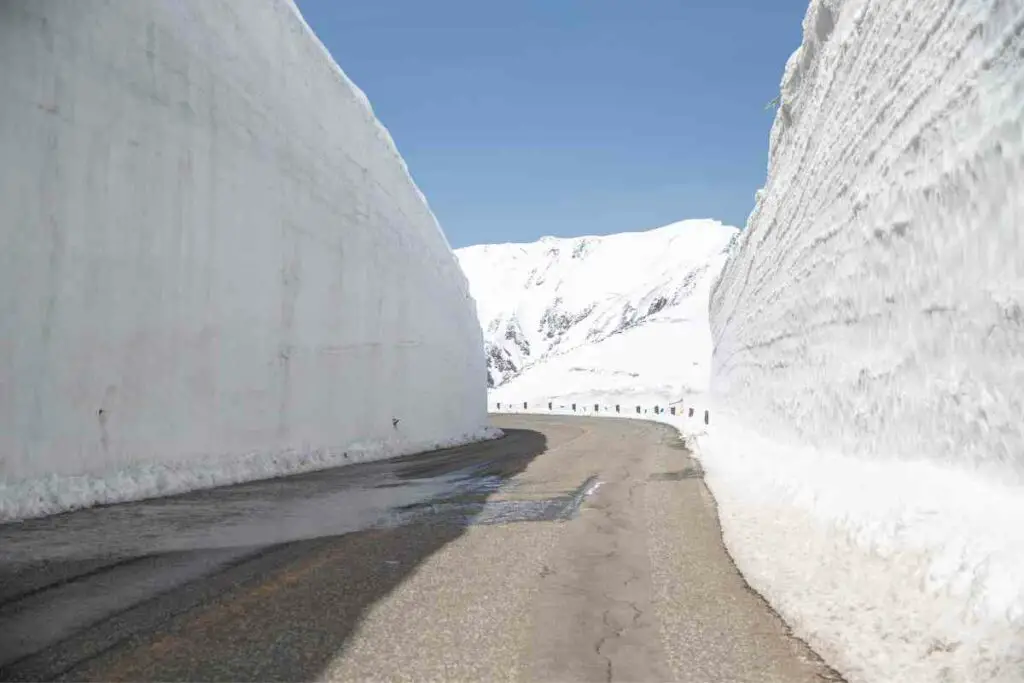
Areas are named within this theme:
- Hell Valley
- Blood Pond
- Blacksmith’s Hell
Celebrating its 50th anniversary in 2021, the Alpine Route’s most famous attraction: ‘The Snow Walls’ have been dug out since the 1970s.
Historical Fact: Tateyama Murodo boasts the most ancient alpine, wooden hut in all of Japan. It dates back over 2000 years!
What’s the best time to visit Japan Alpine Route?
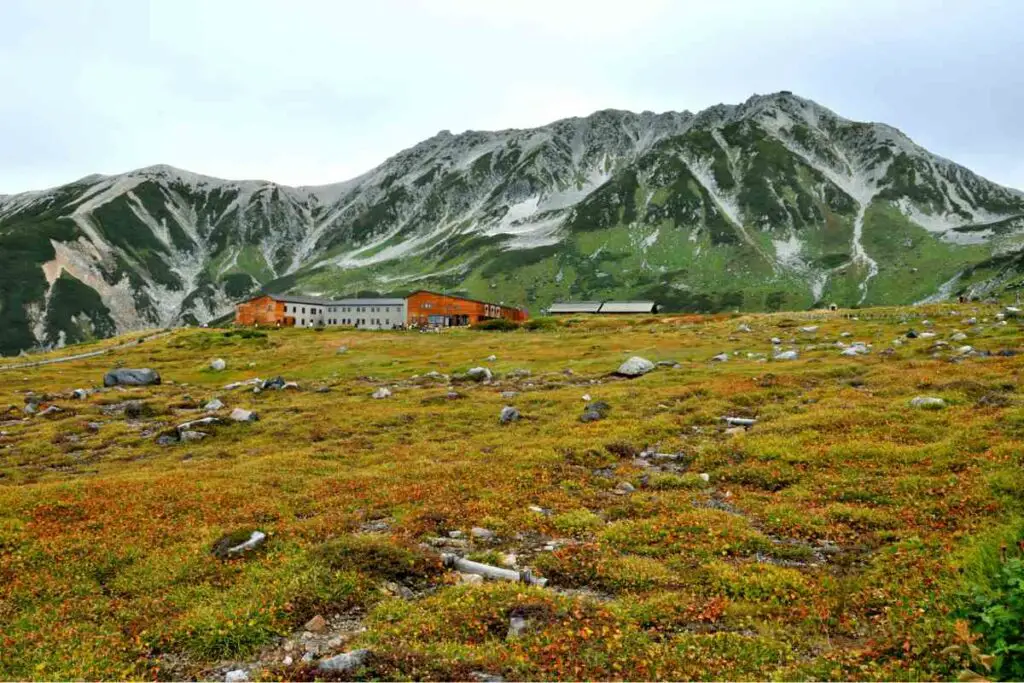
The entire area is almost completely inaccessible between the months of November and April.
Colossal drifts of snowfall blanket the land sometimes over twenty meters deep. An entire road has to be painstakingly dug out to connect Bijodaira to Murodo’s train station, resulting in a snow wall-lined road that dwarfs even the largest trucks.
So, from the month of April to November, the Alpine Route is open for business.
The fact is, that no matter when you go – within the open season – there is much to see and do. However, some attractions are only accessible for a specific window.
Changing Landscapes and Seasonal Transformation
Depending on the time you decide to go, this diverse, mountainous terrain morphs from season-to season.
Throughout Spring and Summer, clear skies allow for sublime views of stunning mountain ranges bursting with the vibrant colours of alpine plant life.
Cascading the land in the fires of autumnal foliage, Winter approaches the Alpine Route and transforms the terrain into a veritable Winter Wonderland.
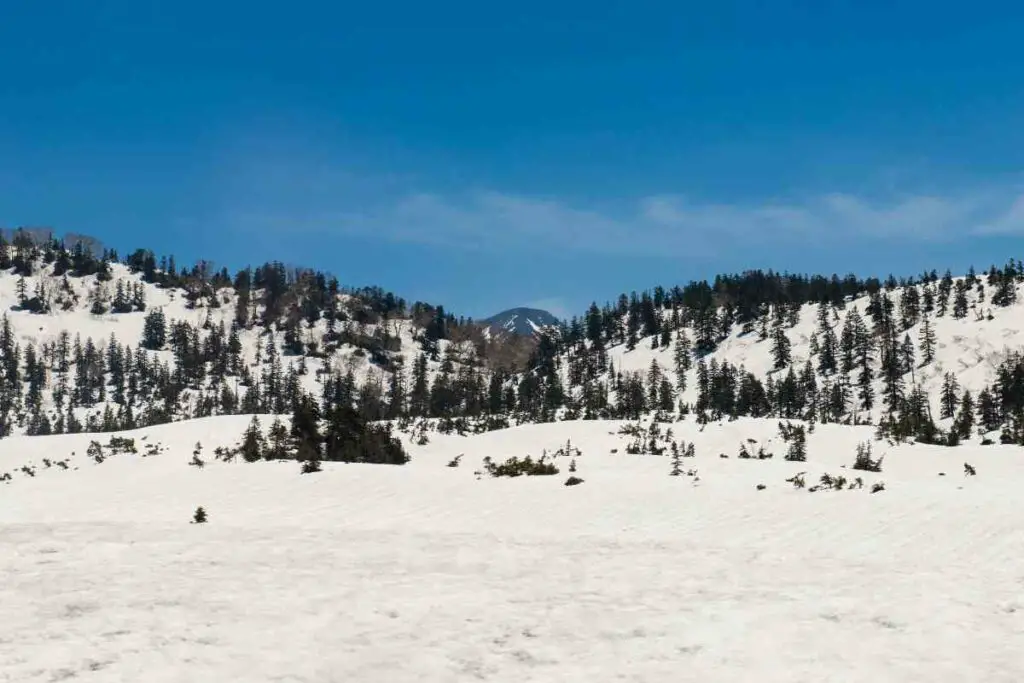
The route does close from December to April and a lot of bus services in the area close with early snowfall. Be sure to check that you are not booking too late in the season.
How long is the Snow Wall Walk open?
From mid-April to mid-June, transports take place along Yuko no Otani: The Great Valley of Snow. During this period, the road is open to tourists who traverse this 0.5-kilometer manmade valley.
If you wish to do so yourself, then during this time would be ideal for you.
Accessible until 7pm, a tour ticket will cost around twenty to thirty-thousand yen. The ideal time for this spectacle is the month of May, when the walls stand at their tallest.
Travel Tip: It is strongly recommended that you bring sunglasses with you. The bright white of the snow reflects the Sun and can be blinding.
When is the Tateyama Ropeway accessible?
Open all season, from 08:00 to 17:00, the ropeway covers just a small part of the route but is under ten-minutes’ worth of incredibly stunning panoramic views.
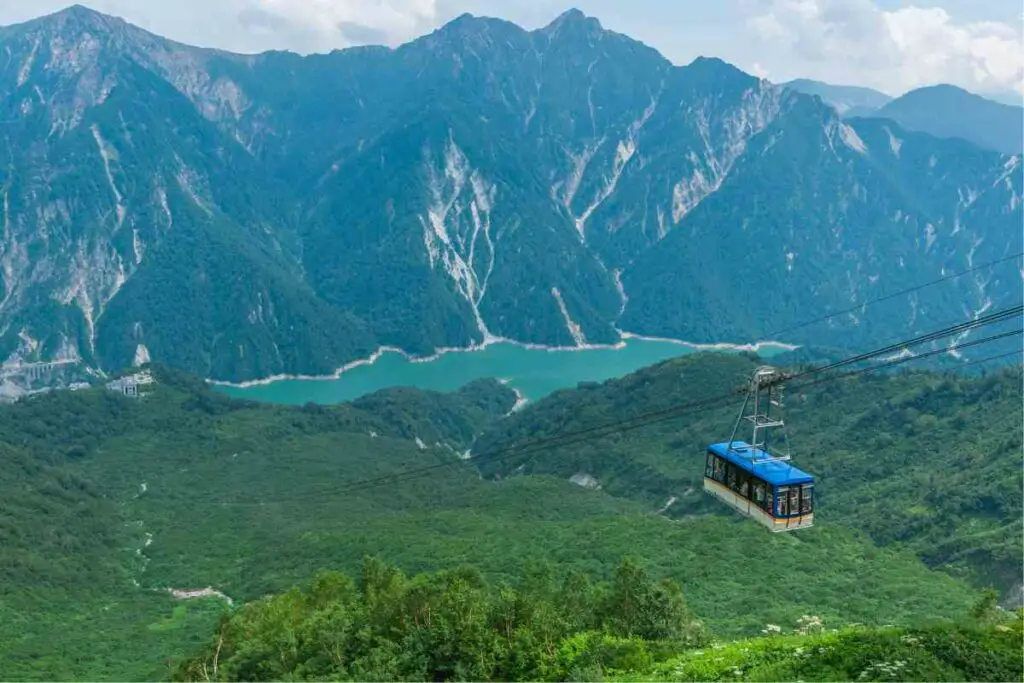
With no towers, this single-line cable car journey takes you from Daikanbo station to Kurobeko over some of the most beautiful scenes you’re ever likely to see.
Depending on the season, these views will change significantly from the freshness of Spring to the vibrance of Autumn.
Is Tateyama’s Korube Dam open to the public?
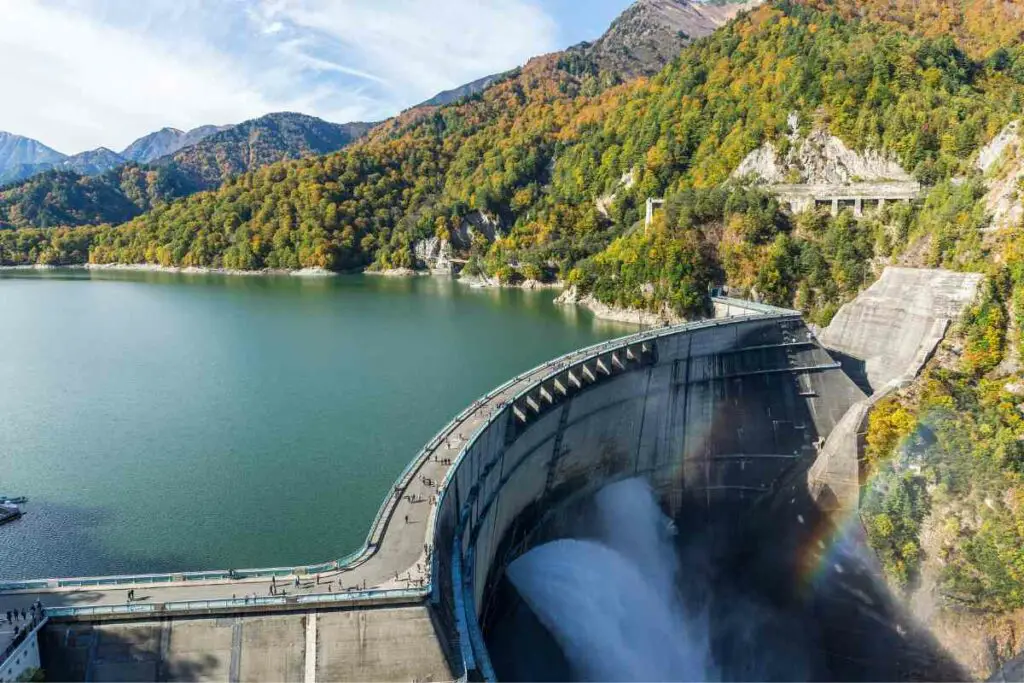
Often used as a walkway linking both bus and cable car stations together, travellers will cut across the dam taking around a fifteen-minute walk.
Being the tallest in Japan, this dam stands at 186m and took seven years to construct. Opening in 1963, the dam boasts an observation point providing breathtaking views.
What’s the best time for Hiking the Alpine Route?
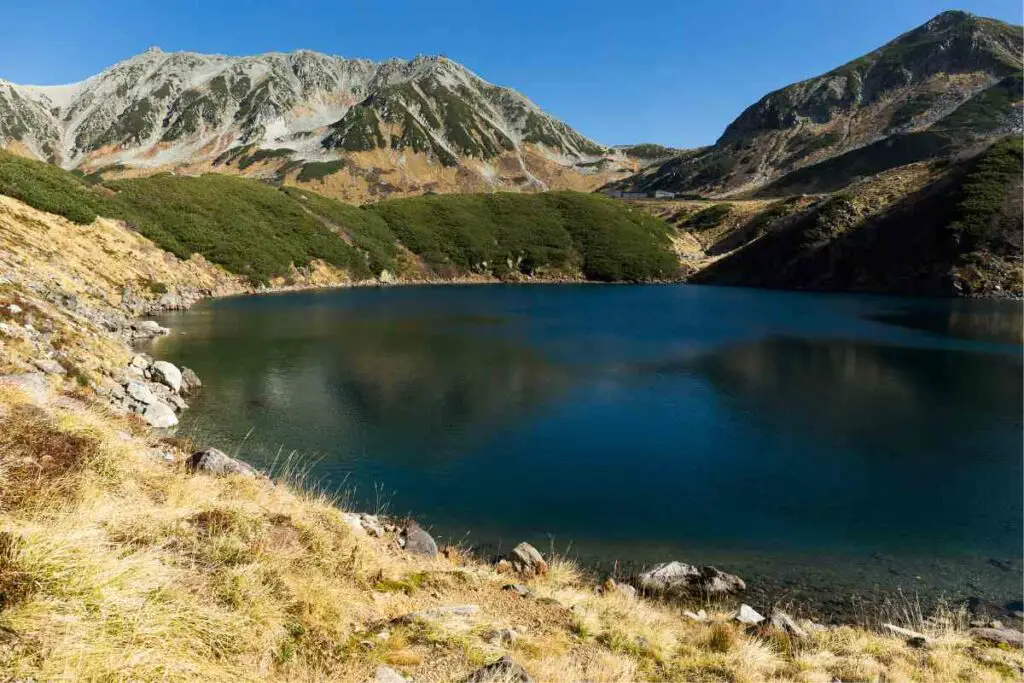
As you may have expected, Summer is going to be the best time to hike Tateyama’s trails. In Winter, the snowfall is so vast that parts become inaccessible.
By about August time, most of the snow has subsided and trails are much easier to traverse – without the need for any specialist Winter equipment.
Alive with wildlife and bursting with colour, the height of Summer is certainly a popular time to go.
Final thoughts
The best time to visit Japan Alpine Route will ultimately come down to your own preferences within the open season.
Should you prefer the vigour of Spring, the heat of Summer, the vibrance of Autumn, or the chill of Winter, there is something for all tastes in this magnificent place.
If it’s the Snow Wall Walk that interests you, then remember to book your trip for around mid-May. Otherwise, the entirety of the open season is your oyster.
- 5 Unexpected Tourist Traps in Japan That Could Blow Your Budget
- Are Shinkansen Trains Still the Fastest: Comparing Global High-Speed Rail Systems
- Best Golden Week Destinations In Japan (Top 10 Locations)
- A Traveler’s Guide to Honshu (Japan’s largest Island)
- Best Hanami Destinations In Japan (Top 10 Locations)
- Eki Stamp Book (Gotta Collect Them All!)



